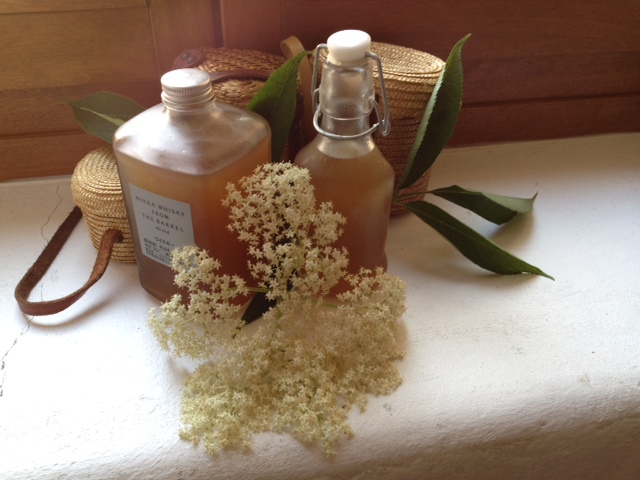I finally bottled a batch of elderflower cordial yesterday, after letting the brew steep for a couple of days and then rest in the fridge until I got around to cooking it up.
One of the bottles I used – I’d actually saved it for use as a cordial bottle – reminded me of a whisky woman I’ve been meaning to mention for a long time.
Anyone who knows Japanese whisky has at least heard of Jessie Roberta Cowan, better known as Rita Taketsuru (1896-1961), or as the Mother of Japanese Whisky.
Born in Scotland, Miss Cowan met a young Japanese man named Masataka Taketsuru who had come to Glasgow to study chemistry and Scottish whisky-making. They married, and she went with him to Japan, where he dreamed of creating a real Japanese-made whisky.

Jessie Roberta Cowan and Masataka Taketsuru
Source: K&L Wine
To make a long story short, they succeeded after overcoming many obstacles on the long road to achieving their goal, from prejudice in both their native countries against an interracial and international marriage to the task of establishing a whisky empire. The Nikka distillery in Yoichi, Japan was founded in 1934, and continues today as one of the world’s top whisky producers.
I’ve written previously about the kind of determination it must have taken for Masataka Taketsuru to leave Japan and study in Scotland, and to use traditional Scottish methods in Japan to make whisky.
But as a long-term expat myself, and as one who once worked in Japan in a town that boasted only one other foreigner at the time, I can only imagine how challenging it must have been for a young Scotswoman in the 1920s, when foreigners were a genuine rarity.

Rita Taketsuru
Source: Japanese Whisky
The cultural divide must have been daunting, to say the least, especially once World War II was underway. However, the war had the effect of increasing domestic whisky business in the face of an import ban.
Rita helped keep the household afloat by teaching English and piano lessons, and some of her clients ended up becoming investors in the distillery.
There is a new Japanese television series about her life, and I wonder how much that series manages to convey the challenges and rewards of living in another culture over the course of decades.

The ‘Mother of Japanese Whisky’
Source: Matome
One of the things I’ve learned during my long time as a foreigner in rural France, at least, is an appreciation of the seasonal joys of homemade jams and cordials. Sure, my grandmother was master of the art in Washington State, but I grew up in the supermarket Sixties and Seventies. I had to relearn everything for myself.
And so to the elderflower cordial.
It’s an easy enough process. Pick some fresh flower heads, shake out any bugs or debris and give them a quick rinse.
Put them into a bowl with lemon zest and orange rind. 
Cover the lot in boiling water, and let it sit around for a few hours or a couple of days (in the fridge, ideally). Strain through a cheesecloth.
Bring it to a gentle simmer with sugar and lemon juice, and funnel it into sterilised bottles or jars, cap them and store them cool.
I used brown sugar, which is why the cordial turned out a bit dark and hazy instead of a nice flowery yellow. If I make another batch this year, it’ll be with white sugar.
A couple of bottles to keep, a couple of bottles to give away.
Perfect in cold sparkling water with a sprig of fresh mint, or in a prosecco cocktail. Ready for summer.
It’s no whisky empire, but it’s not bad.



